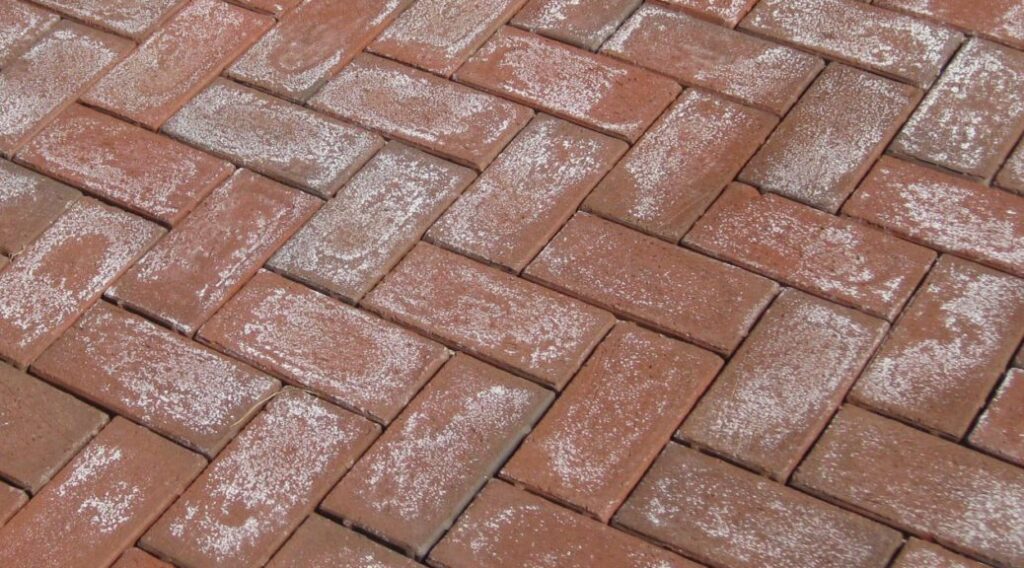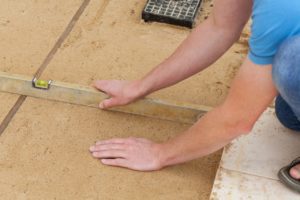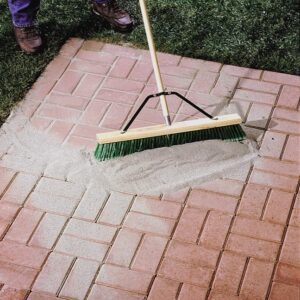
So you just finished your brick installation. Being a paver installation, a retaining wall, or simply walls to a structure, you finally did it. But wait. What’s that? What is that white stuff on your bricks? Have you done something wrong? Are there any problems with the installation?
There is no need to panic. This white stuff is perfectly normal. It happens even in the best installations with the best quality bricks. It doesn’t necessarily mean there’s something wrong with your installation as well.
We will walk you through what exactly is that white stuff and how to get rid of it. So let’s start.
Jump to:
White Stuff on Bricks: Efflorescence
Efflorescence. That is the real name of this white stuff.
It is a fairly common and safe reaction in all kinds of masonry products, including concrete and bricks, and especially in new installations. It is harmless to your bricks, so, again, you don’t need to worry.
What happens is that all masonry products, bricks included, contain a certain amount of natural salt deposits in their composition. These salts remain solid and trapped inside the very structure of the bricks.
However, when they are installed and start to get in contact with humidity, something start to happen.
Since bricks are porous, water can pass through them. And when it does, it dissolves all these salt deposits, carrying them all the way through the surface of the bricks. Once they are in the surface, the water evaporates, but the salts remain. That’s all there is to it.
Again, they won’t damage the bricks and are no indications that something is wrong with your installation.
How to Clean Efflorescence
To put it bluntly: you don’t.
Efflorescence is not dirt, therefore it does not need to be cleaned. You might the efflorescence today, but is there are still salt deposits inside the bricks, more will appear tomorrow.
The best course of action is to just wait until all the efflorescence comes out, and then you can clean it all at once. The recommended waiting period, in fact, is of 60 days after the installation.
During these 60 days, it is not recommended that you use any cleaning methods to remove the efflorescence, and simply wait. Some part of it will be naturally washed away by rain and wind, but if there are still some after this period, a light scrub with a soft bristled brush can solve your problem.
Efflorescence and Sealing
In case you didn’t know, sealing is an important part of any paver installation. It is recommended that you seal your installation as soon as possible to prevent stains and the formation of mold and weeds between the grout lines.
However, due to the efflorescence factor, this “soon as possible” might be tricky. It is still recommended that you wait the 60 days. The last thing you want is to seal your pavers and leave efflorescence trapped inside.
During those 60 days, you’ll have to take very good care of your pavers and, if possible, prevent any activity that could potentially damage them. After that, a good thorough cleaning of your installation will leave it ready to be sealed.
Is it Possible to Prevent Efflorescence?
Yes and no.
While the salt deposits will still be there no matter what you do, you can prevent the underlying cause, which is the overall moisture surrounding the installation.
Ensure proper drainage at the moment of any hardscape installation is pivotal for the overall success of said installation for a number of reasons. Bad drainage can lead to structural problem, which are much worse than simply aesthetic ones, like efflorescence turns out to be.
So, if you plan a paver installation with the seriousness that it requires, you will already be doing the best thing you can to prevent as much efflorescence as possible.
Even so, it is virtually impossible to prevent all of it. But doesn’t mean you cannot work towards minimizing its effects.

Professional Help Against this White Stuff on Your Bricks
Hopefully our article clarified what exactly is that “white stuff” on your bricks. We hope we could put your mind at ease as to why it is not a big problem.
Here at JS Brick, over the course of our 22 years of activity, we have seen many homeowners get worried about efflorescence, sometimes even when they knew it was coming. The truth is that it is a natural process in any hardscape installation, so you don’t need not worry too much.
Still, if you want to minimize its effects as much as possible, a professional installation can be of great help, as well as a professional cleaning and service after 60 days. So don’t hesitate to get in contact with a professional in your area to help you.
And if you happen to be in our area of activity, around the Sarasota County, in FL, why not give us a call to help you?
Contact us right now at +1 941 586 9140 or email us at [email protected]. We would be happy to hear from you and help you with any paver and hardscape need you might have.



